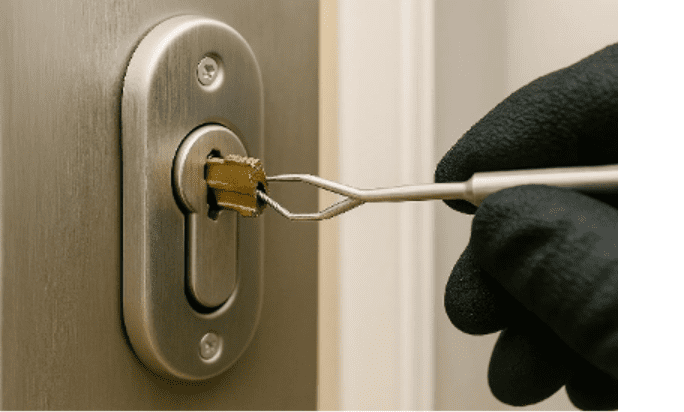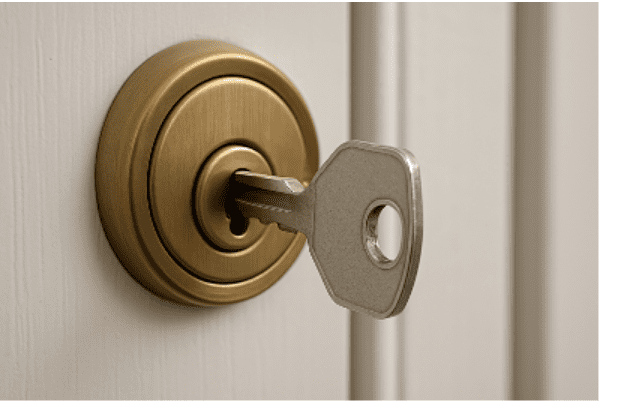You are ready to leave, turn the key… and it snaps. The feeling is the same for everyone: shock, time pressure, and the worry whether you can get the fragment out safely. A sleutel afgebroken in slot looks like sudden bad luck, but in most cases the cause builds up over time: wear, alignment issues, poor maintenance, and user habits all combine until the metal gives way. In this guide Slotenmakerhulp explains what really happens, which warning signs you should not ignore, and when it makes sense to act before it happens again. A key works with torsion. You insert it fully, the grooves lift the pins or discs, and with a turn you transfer force through the thin neck into the cylinder. Every part has a little play and resistance. If the cylinder is stiff or the latch is jammed, the stress on the neck increases. Metal fatigue does the rest: tiny cracks grow until, one ordinary turn later, the key breaks. It is not pure coincidence; it is stress building up over time.
Key material and copies: The hidden factor
Not every blank is the same. Cheap alloys bend and crack more easily. Many people make a copy of a copy, and each generation introduces small errors in the profile. Pins no longer lift smoothly, so you use more force. Thin house keys with narrow cut-outs are especially vulnerable. The safer choice is to order a fresh copy from the original card code. That reduces the chance of a key broken in the lock. A perfect key in a badly aligned door will still struggle. A sinking building, a door hanging off balance, or a poorly set strike plate all push sideways on the latch. You notice because you have to lift or press the door before it closes. That sideways pressure transfers into extra torsion on the key. Have a technician adjust the hinges and refit the strike plate; a small job that prevents bigger problems later.
Climate and maintenance
Cylinders work best clean and lightly lubricated. In winter, condensation can freeze inside. In summer, metal expands and attracts dust. Use a dry lubricant like PTFE or graphite not oil. Oil gathers dirt and makes the lock stiffer after a while. Sand, for example after a day at the beach, also grinds down pins and grooves. A short yearly service cleaning, dry lubrication, checking dust covers removes much of the resistance that would otherwise end in a broken key. A heavy bunch of keys pulls constantly on the thin neck. Every bend in a pocket is another stress test. Keys often snap when half-inserted and twisted, or when used as a handle to pull a door shut. Change those habits. Always insert fully, turn with gentle pressure, never yank on the key itself, and keep the chain light. These simple steps save you from causing your own key broken in lock.
Warning signs you should not ignore
A key bending slightly when you turn. A cylinder that only works after “wriggling.” A door that shuts only when pushed in. A rough, sandy feel when you insert the key. Little squeaks when turning. All of these are red flags. At that point you are closer to a broken key than you think. Replace a worn key early, have the door aligned, and clean or replace an old cylinder.
Modern security cylinders: Strong but sensitive
SKG-tested cylinders with anti-drill or anti-pull protection raise security, but they also need careful handling. If you turn too early or at an angle, they resist more. That is fine if you correct quickly, but keep forcing and the key can still break. When fitting such cylinders, get advice on the right technique. With heavy multi-point locks, a good door handle should take the strain so the key does not. If the key does snap, do not glue a paperclip to it or push the fragment deeper. That damages pins and shields, making extraction harder. If a piece sticks out, you can try to pull gently with tweezers or a broken-key tool. If it does not move within a minute, stop. Forcing will cost you a new cylinder. Slotenmakerhulp can remove the piece carefully, leaving the cylinder intact and saving you extra costs.
In summary
A key rarely breaks out of nowhere. Material, alignment, maintenance, climate, and habits all decide whether it turns smoothly or snaps. Spot the warning signs early, keep locks clean and lubricated, and replace worn keys before they fail. If it does go wrong, don’t improvise: quick, professional removal is cheaper than replacing the whole lock. Slotenmakerhulp is ready with diagnosis, safe extraction and structural solutions, so you can lock and unlock without worry again.
For more information about our services, contact Slotenmakerhulp directly.




































